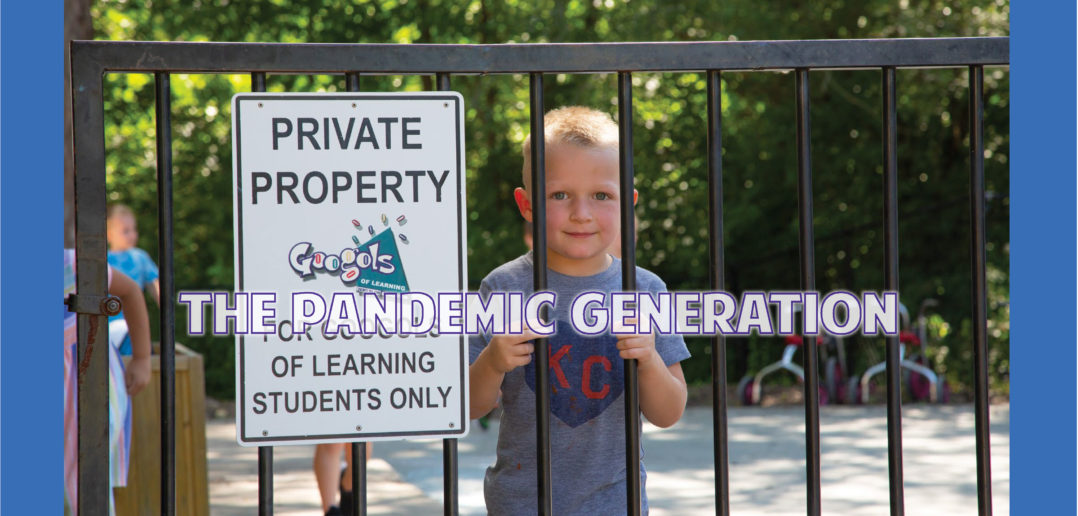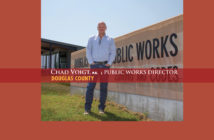| story by | |
| photos by | Steven Hertzog |
During this unprecedented time, child-care operations have taken a hit not only financially but also in enrollment, and our kids may pay the price.
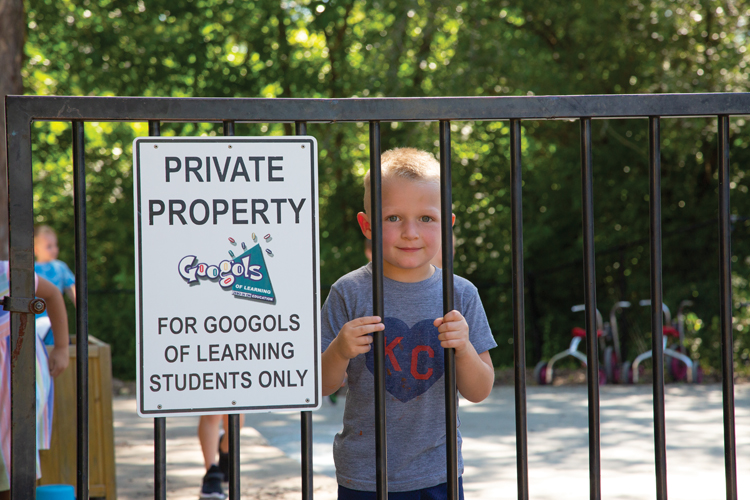
Student watches through a fence from the play-ground at Googols of Learning
My head is spinning. My friends’ heads are spinning. Parents’ heads all over the country are spinning. And they’re exhausted from playing multiple roles on a daily basis during this months long pandemic: teacher, playmate, wage earner, line cook, therapist, coach. And now, parents are faced with a situation not fathomed since 1918: How do we safely send our kids back out into a world still plagued by a virus we don’t fully understand?
For some of us, the answer is clear: We do it because we have to. We have to put food on the table. We have to qualify for health insurance. We have to pay the bills. Already a challenge for some, quality, affordable child care has become more of a challenge in the face of COVID-19.
“Without a doubt, this [pandemic]has presented challenges for families trying to determine not only child care but transportation and homework assistance during these unprecedented times,” explains Reva Wywadis, executive director, Child Care Aware of Eastern Kansas. This agency serves as the sole parent resource center for the state of Kansas, providing families from throughout the state child-care referrals and education about how to choose high-quality child care.
She says the child-care industry operates on a shoestring budget, and the majority of child care across the country is provided by small businesses. “Many experts predict that as many as half of the current child-care facilities will not survive this pandemic financially and will not stay in business.”
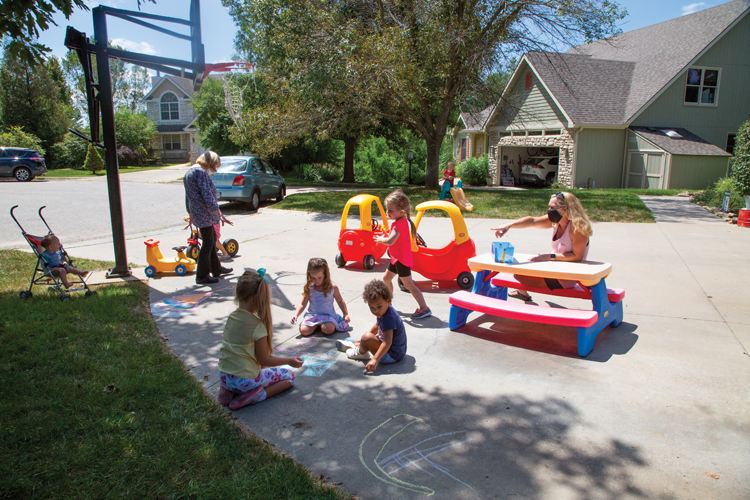
Students play outdoors at Mary Beth Karlin Daycare
In-Home Care
Mary Beth Karlin, owner of Mary Beth Karlin Daycare, an in-home child-care operation, says her budget went from having a steady income to nothing at all when she had to close. “Even when I was able to open back up, I had very few kids come back to day care, and I totally understood that and supported each and every family who chose to keep their kids home.”
Karlin, like many child-care operators, both in-home and brick and mortar, applied for assistance to keep her business afloat. Assistance offerings at the time included grants, small business loans, unemployment, Paycheck Protection Program (PPP) loans, Cares Act assistance, Hero Relief Program funding, Economic Injury Disaster Loans (EIDL) and other options.
“Since COVID, I feel like I’m even more protective of my day-care children,” Karlin explains. “I take their temperature as soon as they arrive and literally hold my breath each and every time, praying they aren’t running a fever. I’ve always felt a huge responsibility to every child I’ve cared for, but COVID has taken that to another level. Now I feel like if I’m not picking up on a sign or symptom of the virus, I not only am putting each and every child in my home at risk, but my mom and my family, as well.”
Melissa Daggett, owner and operator of Melissa’s Play School, agrees. “The fear of getting this virus and not knowing how it could affect my family is pretty scary. I have a son with asthma, and we have been very cautious.”
She says what she’s learned most throughout this pandemic and running a home-based child-care operation is that most parents are second-guessing their decisions. “Do they keep the kids home? Do they attempt to get back to work? If they have a runny nose, could it be a COVID symptom? … We take care of each other and our families,” she explains. “We all respect each other’s level of anxiety and hold no judgement on anyone’s decisions.”
And most importantly, “We practice a lot of patience and kindness with the kids, who are more cooped up than ever and know something is scary out in the world, but don’t have the capability to understand it,” Daggett adds.
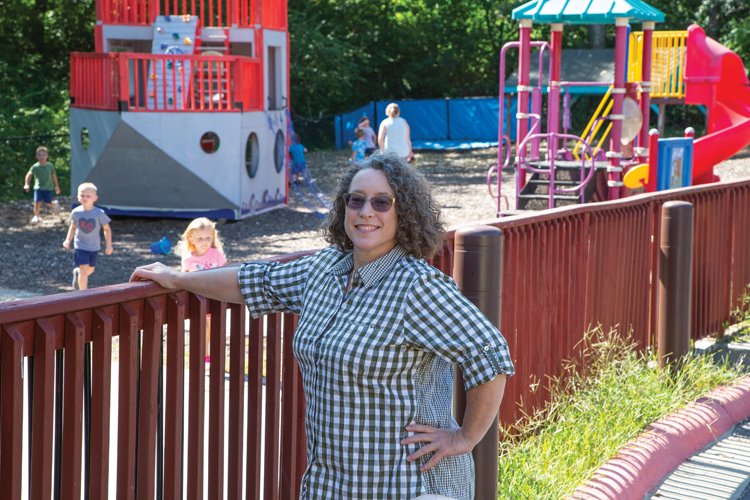
Amy Gottschamer, Executive Director of Googols of Learning
Child Care/Preschool
Lawrence Community Nursery School (LCNS), one of the oldest cooperative preschools in the United States, follows the USD 497 schedule and will be closed when those schools are closed. LCNS was open for a short time this summer and, when not open, provided families videos and Zoom calls to keep kids engaged. When Lawrence schools go online Sept. 8, LCNS will offer its families an all-virtual-learning option or an option that allows virtual learning with small play groups meeting on the side.
“We are a small school, so it’s easier to try and follow guidelines, like we do not have to worry about sharing our playground with another group where we would have to clean the playground,” says Stephanie Duncan, LCNS director and lead teacher.
Those guidelines, put out by the Lawrence/Douglas County Health Department and Kansas Department of Health and Environment, advise the community and child-care facilities how best to keep COVID at bay in the classroom. “They put out guidelines, but they are just guidelines. We had to figure out what that looked like in the classroom,” she continues.
With help from its Board of Directors, Duncan and the other LCNS teachers came up with an in-classroom plan, which was implemented when the school was open this summer and will continue when children return to school. Enrollment was reduced from 18 to 20 kids per class (one a.m. and one p.m. class per day) to 10 per class. Teachers must wear masks full time, and children are encouraged to, as well, but not required. Temperatures are checked on adults and kids at check-in each day. Any adults entering the building must remove their shoes and put on a mask. Any rugs and soft materials have been put in storage. Teachers clean every toy every day. The community water jug was eliminated, and each child now has his or her own water bottle. Children no longer share materials in the classroom, and tables that once had five children only have two, and they are distanced. Family-style snack time is now served individually and must come packaged. Common areas are cleaned every hour, and teachers stay longer at the end of each day to clean for the next day. Potty seats and handles are washed after each child or adult uses the bathroom. More hand-washing stations are provided, including outdoors, and kids are washing more often. More outdoor playtime is encouraged.
Child-care facilities in Lawrence have implemented their own sets of guidelines similar to what LCNS has done to protect the health and well-being of their employees, families and children.
Duncan explains that LCNS had less money coming in after it closed even though some families chose to keep paying tuition. “We did receive a small grant of $500 and then the PPP loan to help us get through the months we are in now,” she says. The preschool also had a large unemployment pool to draw from when forced to put teachers on unemployment for a time. Extra costs included gloves, masks and cleaning items used during June and July for the small, in-person classes held then.
Amy Gottschamer, Googols of Learning Child Development Center executive director and owner, explains that early childhood is a low-income industry, and there are very few resources or reserve accounts her operation can immediately draw upon during this kind of crisis. Googols, with few reserves to fall back on, also had to put staff on unemployment for a time when this pandemic began while she searched for funding to keep the operation running.
“It’s really more of a lack of income than increased expenses,” Gottschamer explains. “While we are paying staff for tasks such as extra cleaning and health assessments, and temperature checks every day, which wasn’t needed before, the bigger problem is that our enrollment dropped significantly.”
She says when Googols reopened, it had about one-third of its usual enrollment, not enough to pay expenses. PPP and EIDL loans have helped to keep the bills paid, and today, the facility is back over 60% of prepandemic enrollment.
Googols also implemented new guidelines to impede COVID, including temperature checks, mandatory masks for adults and school-aged kids, extra cleaning and sanitizing, social distancing, allowing no one in the building except teachers and students, and installing new HEPA filters in all the air systems.
Hilltop Child Development Center, a predominantly University of Kansas child-care center that also serves the greater Lawrence community, has lost more than $500,000 since the pandemic began. “We are 91% funded by student tuition,” explains Jeremy Fite, Hilltop executive director. “There were obvious concerns for families as they had to determine the best path for their children. With lower enrollment, our revenue took a substantial hit. Couple loss of revenue with additional costs of PPE, and it is incredibly concerning financially.”
But Hilltop is fortunate to have had reserves to absorb some of those losses. “Our large-scale financial planning will allow us not to make any drastic changes to make up for our losses, [but]our recovery period will likely take years to account for the dollars lost.”
Hilltop was able to continue to pay all full- and part-time staff during closure, and will continue with its regular billing and tuition rates. It may, however, face some budget cuts this year, including staff raises, travel and transportation.
Another change as fall semester begins at Hilltop is in how the building will be staffed to minimize the movement of part-time staff from room to room. “We have to minimize the potential exposures that can occur in case there is a positive case in our facility,” Fite explains. “This will likely increase our staffing costs this year.”
Hilltop has not had to put any limits on classroom size or staff, however. The biggest change (minus cleaning, masking and drop-off/pickup routines) has been the implementation of “cohorting.” “Meaning that they do not mix with other classrooms,” Fite says. “They are on the playground one classroom at a time. This creates a scenario in which we can contact-trace quickly and minimize any large closure.”

Students play and read at Hilltop Child Development Center. Jeremy Fite, Executive Director stands by a Jayhawk statue
At-Risk Youth
Positive Bright Start (PBS) provides services to highly vulnerable young children and their families. It operates two preschool classrooms in collaboration with the Lawrence Douglas County Housing Authority and provides children with highly qualified mental-health therapists who provide age-appropriate therapeutic interventions to children up to 5 years of age. “Most of the children we work with have experienced some type of trauma,” explains Anna Jenny, Positive Bright Start executive director. “Because trauma is intergenerational, we also provide therapy for parents around parenting issues, emphasizing attachment and relationship-building, and processing their own trauma.”
In addition, PBS administers early-education tuition scholarship programs to ensure children in low-income families have access to a quality early-childhood education. It also sponsors home-care providers participation in the Federal Child and Adult Care Food Program, which reimburses providers for meals served to children in their care.
After reopening in May to a limited number of children to maintain social distancing, PBS has slowly added back more children and teachers, and is now again at full capacity. It relied on teletherapy during the time it was closed and now schedules clients so they don’t overlap in the waiting room. Therapists pick children up at their parents’ cars and walk them in.
“One of the biggest challenges we have faced is the chaos and uncertainty the pandemic has created,” Jenny explains. “When we closed in March, we expected nine children to graduate in August and had a waiting list of children to start when they left. The pandemic caused some parents to keep their children home. Others became uneasy as transition to kindergarten in the public schools approached and wanted to keep their child at PBS. Some parents on our waiting list decided not to enroll their child in August. What we thought was a certain class roster became very dynamic with removing children and subbing others.”
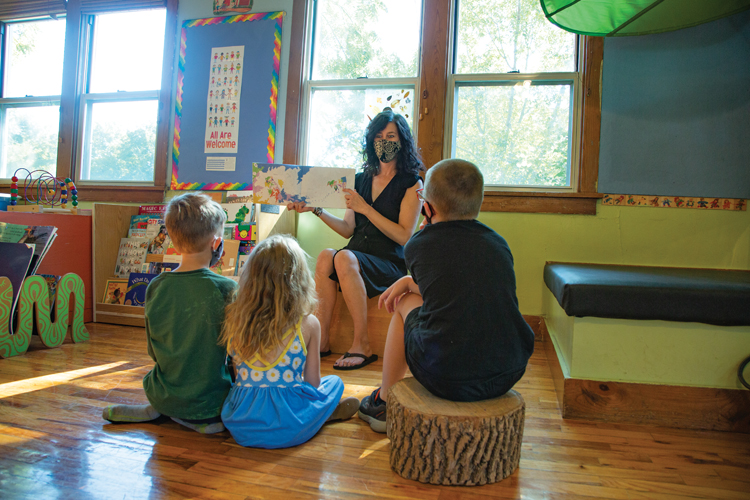
Stephanie Duncan, Lawrence Community Nursery School (LCNS) Director and Lead Teacher reads to students
An Essential Service
The U.S. Chamber of Commerce Foundation recently published a report demonstrating why a strong child-care system is a vital piece of the country’s ability to rebuild its economy. It explained the impact of child care (or the lack thereof) on working parents was essential, allowing them to enter, reenter or remain in the workforce. But affordable child care is hard to come by for many and even harder during a pandemic such as COVID. With families now burdened by their child-care needs and facing tough decisions on employment (leave the workforce to stay home with kids, work from home, suffer unemployment), businesses are sure to encounter difficulty with return-to-work plans and recruiting and retaining employees, the report states.
“In March and April, we saw a decline in families seeking child-care referrals. As more families are returning to the workplace, and employers are reengaging their workforces throughout the region, referral requests are now beginning to steadily increase,” Child Care Aware’s Wywadis says. “Now, as schools have announced their plans, we are experiencing calls from families trying to navigate the hybrid schedules without many viable options.”
She says some communities have more options for care, and community partners are coming together to develop new services to serve children during the hours and days they may not be in school but still need supervision and support. The agency has also seen an increase in parents seeking part-time child-care options, including those who need care for out-of-classroom learning days for school-aged children.
Googols of Learning is one of those facilities embracing the older children in its community. Teachers and staff have developed a plan to help families who need help not only with preschool-aged kids but also school-aged children who are either out of school because of closure or attending schools using a hybrid model. They created a Distance Learning Program, into which the center has accepted K through third-grade siblings of preschool enrollees. Googols teachers will facilitate distance learning through USD 497 within school-aged classrooms, supporting district teachers by providing time and space conducive to learning.
“We’ll help them stay on task and on time, and provide one-on-one assistance as they need it,” Executive Director Gottschamer explains.
The center will also offer a hot lunch and two snacks, daily outdoor play, free play and additional learning activities outside of the six-hour school day. And teachers will teach the children strong social-emotional skills that are essential, Gottschamer believes, in a crisis like this.

The kitchen at Hilltop Center prepares meals for students
A Helpful Tool
Many child-care facilities’ personnel have been anxious to get hold of additional guidance and support as they attempt to balance public-health guidelines with what they know about how children learn through the context of relationships and interactions, Wywadis explains. Child Care Aware worked collaboratively with health department officials to publish the Preparedness and Planning Guide for Child Care Programs to help mold child-care providers’ policies and practices to meet both the needs of children and families, as well as the health and safety of staff and clients. That guide has been broadly adopted as a useful tool by many regional health departments and is published on the agency’s website at east.ks.childcareaware.org/child-care-providers/preparedness-and-planning-guidelines.
“Research clearly shows that what happens in the first five years of a child’s life lays the foundation for all later learning,” she says. “High-quality child care is a critical part of the infrastructure needed for healthy communities and a healthy economy. It is an issue that everyone should be invested in, not just parents. Business and community leaders have to be creative in supporting their workforce with young children.”
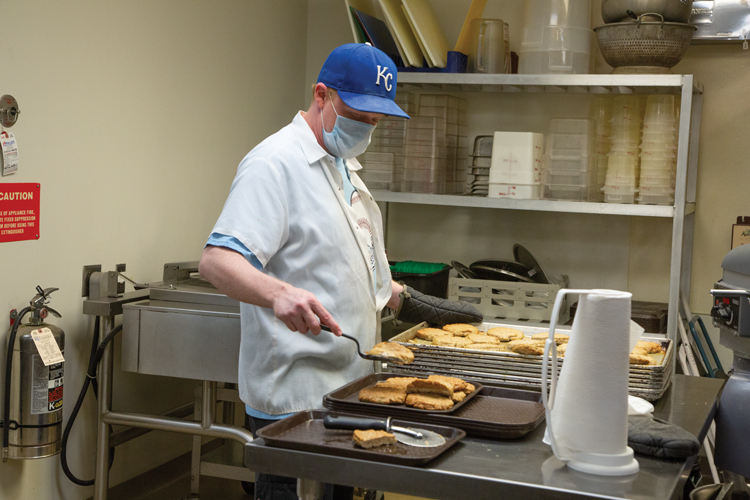
The kitchen at Hilltop Center prepares meals for students

